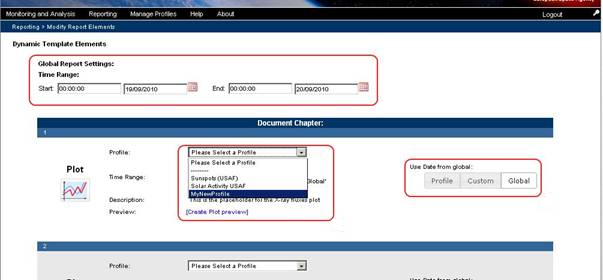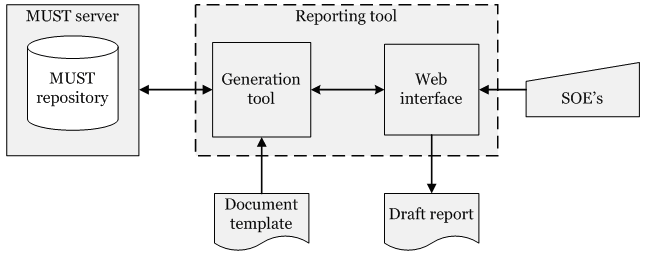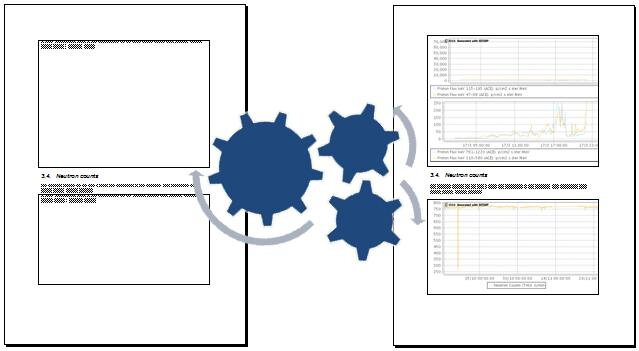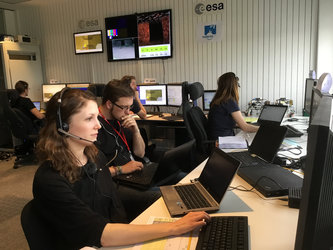ORATOR
Online Report Automation Tool
Flight Control Teams (FCT) regularly produce mission operations reports. Creating these reports can be cumbersome and time-consuming. The ORATOR reporting tool facilitates this process by automatically extracting required data from the MUST databases and includes generated plots, values and texts in definable document templates.
Keywords: reporting, automation, monitoring, data extraction, web-based collaboration
Results
Report generation processes, especially creation and inclusion of data plots into reoccurring reports, are highly facilitated through automation, leaving human involvement focused on the actual content description and data interpretation. In addition, collaborative features reduce iteration cycles between team members when composing joint reports.
Technology
Web based and stand-alone interfaces, direct Microsoft Word document creation and manipulation fitting into current work-flow. Automatic template and profile-based data extraction from MUST.
Development Team
Developed within our group and Solenix GmbH, Switzerland.
Description
The Flight Control Teams produce different types of mission operations reports, e.g. pass reports, weekly reports and monthly reports. These reports contain relevant information of the reporting period, including science activities, maintenance activities, health status and fuel consumption. Different missions have different reporting habits concerning the volume and details of the report and the number of the produced reports. Some reports are simple, while others require extensive graphics and data analysis.

Most reports are produced manually and the report generation process includes data extraction from the mission control system, data reformatting, data analysis and interpretation, generation of graphs, writing of accompanying text, and integration of all elements into the report. Normally, one person has the overall responsibility for the creation of the reports, but each FCT member takes care of their subsystem and/or instrument and they send their input to the person responsible for the report, e.g. by e-mail. This manual procedure is cumbersome, prone to errors and time consuming, particularly because the required data may come from various different sources.

The reporting tool automates a large part of the report generation process. It consists of two components: a web-based Graphical User Interface (GUI) and a reporting engine. The GUI allows the users to create the report components that are not automated, e.g. the free text elements describing the various activities and the data interpretation. The reporting engine then collects all the various inputs for the report, i.e. telemetry available from MUST, and other data from various sources. It processes the data and generates graphs, tables and statistics and also integrates the text elements and pictures produced by the FCT members. Finally, the report is generated and provided in Microsoft Word document format, which is the standard format in ESA.

The creation of reports in Orator is template based, allowing the definition of location, size and content of the dynamic data to be added directly in a word document. With this approach, template creators can use a standard document as skeleton with almost-WYSIWYG functionality when preparing a report. In addition the tool supports administrative operations like creation, deletion, version control and locking of a report through its GUI. These operations can be performed by users with the appropriate rights.
Orator has been developed using the open-source, Java based software and web technologies. It significantly decreases the time required for the generation of a report and it provides a single point of report control for the Flight Control Team. In addition it easily allows to create the same report for different time spans.







